TE TIRITI O WAITANGI







03 EDITORIAL | ĒTITA
04 Timeline
Te Huihui o Matariki Chi Huy Tran (he/him) [Taranaki Tūturu, Te iwi o Maruwharanui, Ngāti Maniapoto]
06 Te Tiriti 101 Teddy (he/it/ia) [Ngāpuhi]
08 Treaty partners: VUWSA x NT
Te Waikamihi Lambert [Ngāti Awa, Tūhoe, Ngāti Ruapani, Ngāpuhi]
11 Tīpuna, Te Tiriti and the Three-Headed Taniwha
Hemi Pinford-Whanga [Ngāi Tūhoe, Waikato-Tainui]
12 I a te rā, i a te rā Te Rau Hihiri
14 Tagata o le Moana mō Tangata Whenua:
A Guide for Pasifika on How to be Allies Mauatua Fa’ara-Reynolds (she/they) — Tahitian (Ra’iātea, Taha’a, Huahine) and Norfolk Islander
16 He Reta ki te Tirti nā Te Ara Whānui
Te Kura Kaupapa Māori o Te Ara Whānui
17 The Difference Between Me and Friends Going to Waitangi vs the Government
Rosa Hibbert-Schooner [Te Arawa, Ngāti Whakaue, Ngāti Awa]
22 Standing on Principle: Keeping the University on its Tiriti toes
Meegan Hall [Ngāti Ranginui]

He kōrero tāu?
Our magazine, Salient, is run by students for students. Without the involvement of students, we wouldn't be able to operate. Every year, we welcome pitches and inquiries from individuals who are interested in writing for us. For more information, please email editor@salient. org.nz or visit our website at salient.org.nz.
He kōamuamu
Complaints regarding the material published in Salient should first be brought to the CEO in writing (ceo@vuwsa.org. nz). If not satisfied with the response, complaints should be directed to the Media Council (info@ mediacouncil.org.nz).
Mō mātou
Salient is published by, but remains editorially independent from, the Victoria University of Wellington Student's Association (VUWSA). Salient is funded in part by VUWSA through Student Services Levy. Salient is a member of the Aotearoa Student Press Association (ASPA).
The views expressed in Salient do not necessarily reflect those of the Editor, VUWSA, or the University.
Ngā whakapāpā
39

Ashleigh Putt-Fallows (she/her/ia - Ngāti Whātua, Ngāpuhi-Ngāti Hine, Tūhoe)
Kia Ora and welcome to the Te Tiriti o Waitangi issue of Salient. This year and issue is very special to us. It is the first year Salient has had Te Ao Māori editors, and the first time we have done an issue like this. This issue is by Māori for Māori. Almost every contributor is tangata whenua. The issue has kōrero from a range of Māori representative groups, kaiako and tauira, as well as amazing toi. With topics around Waitangi, the basics of Te Tiriti, honoring Te Tiriti in different spaces and contexts and much more, it's a great and informative issue I encourage everyone to read.
As the debate around Te Tiriti intensifies we, as Māori, feel the need to use every platform possible to fight ourselves and our culture. Including the platform we have here at Salient.
I want to acknowledge all our contributors for giving us their time, energy and whakaaro.
I also want to acknowledge the tautoko from the Salient team, especially our Māori and Pasifika whānau on the team.
Special shout out and aroha from myself to Huy, my co-editor and the designer for this issue. Ko Atutahi te whetū tārake o te rangi e hoa.
Kea
Let me tell you about one of the biggest scams known to mankind. It is called The Treaty of Waitangi or Te Tiriti o Waitangi, ko te tuhinga taketake o tēnei iwi. It is a scam because the Pākehā and Māori versions of Te Tiriti contained significant differences in language and intent, particularly around the crucial concepts of sovereignty and governance. The Māori version suggested shared governance and protection of their rangatiratanga, while the English version implied full sovereignty to the Crown. Over time, the Crown's actions often breached Te Tiriti’s terms, leading to loss of land and erosion of Māori rights and culture.
This has fueled a sense of betrayal, leaving a mamae for generations, even until today.
Nō reira, kei te tino whakapau kaha ahau, me te aroha ki tēnei putanga, kia mārama ai koutou ki te pono o te Tiriti, me te take he mea nui ki te whakamihi i ngā tangongitanga i waenga i ngā rerenga e rua. Ka nui te maiohatanga ki a Ash, mō te whakatika i te nuinga o ngā tuhituhi, nā reira i puta ai te wā māku ki te mahi i ngā āhuatanga hoaho me ngā mahi toi. Nanao he kape e te whānau!
CHUR Te Huihui o Matariki Chi Huy Tran (he/him - Taranaki Tūturu, Ngāti Maruwharanui, Ngāti Maniapoto)
In the alpine regions of the South Island in New Zealand, the Kea, a native parrot species, stands out with its clever and mischievous personality. With their olive-green feathers and bright orange underwings, these social birds are easily recognized. They possess impressive problemsolving abilities and are the world's only parrots that live in high-altitude environments. Their diet consists of plants, insects, and even carrion at times. Renowned for their curiosity, Keas have been observed playing with objects and interacting with human possessions, demonstrating their remarkable intelligence. They’re also known for stealing things from unsuspecting hikers. Hey, you know what else is stolen?

In 1960, the Waitangi Day Act was passed, designating February 6 as Waitangi Day. However, it wasn't until 1974 that it was officially declared a public holiday, despite ongoing requests.
Governor-General Lord Bledisloe gifted Waitangi Treaty House and grounds to the nation, envisioning a national memorial. The first official commemoration was held in February 1934.
In 1835, British Resident James Busby drafted the Declaration, which declared New Zealand's independence, stating that all sovereign power and authority belonged to the hereditary chiefs and tribes. 6 February signed On the the mately circulated but witnesses. Governor first
The Waitangi Tribunal, established in 1975 under the Treaty of Waitangi Act, grants Māori the authority to file claims against the Crown for breaches of Te Tiriti. This process allows for the resolution of grievances and the recognition of historical injustices, promoting reconciliation and treaty-based relationships in Aoteroa.
In 2004, the Foreshore and Seabed hīkoi drew thousands to Parliament, symbolising Māori discontent with the Foreshore and Seabed Act, sparking nationwide dialogue on indigenous land rights and Treaty grievances.

This timeline is centred on the Māori perspective, traces the ongoing journey towards tino rangatiratanga and justice for our people. While comprehensive, it inevitably omits some events due to space constraints.
Captain Hobson became the British Crown's Lieutenant Governor to negotiate a treaty with the Māori people, paving the way for New Zealand to become a British colony. The treaty drafting process began.
James Busby made additions to the English Treaty, which was then handed to missionary Henry Williams and his son Edward for translation into Te Reo Māori, all completed in one night. However, the translated articles convey different messages.
February 1840:
Treaty
signed the day, 40 rangatira Māori eventually signed the Treaty. In days and months following the official signing, approximately 8 copies of the Te Reo Māori version of the Treaty were circulated throughout New Zealand. Over 500 chiefs signed, many did not. All copies were also signed by European witnesses. Te Tiriti was signed at Waitangi by Lieutenant Governor Hobson for the Crown, with Hōne Heke being the chief to sign.
The Māori version was presented and discussed with around 500 invited Māori, but no agreement was reached. The two treaties differed because the translations interpreted the three articles differently.
In 2010, New Zealand acknowledged the UN Declaration on the Rights of Indigenous Peoples, reinforcing Māori rights under Te Tiriti o Waitangi, signalling a commitment to indigenous rights and reconciliation.
Ngā whakataunga o te Rōpū Whakamana i te Tiriti o Waitangi
(The Waitangi Tribunal settlements) persist in rectifying historical grievances, restoring mana to ngā iwi, advancing self-determination, and pursuing justice from a Māori perspective. These settlements symbolise shared commitment to reconciliation and indigenous rights, shaping a more equitable Aotearoa.


This feature is supposed to teach you all about what Te Tiriti actually is, what is says, and how colonisers fucked us Māori over. The first thing to cover is that Te Tiriti is still widely regarded as the only founding document of Aotearoa. If you think that, though, you’re wrong.
In 1831, 13 Ngāpuhi chiefs wrote to King William to request an alliance and protection. In 1835, He Whakaputanga o te Rangatiratanga o Nu Tireni was signed. He Whakaputanga is often forgotten, but was the first legal document to recognise Aotearoa as a sovereign nation ruled by Māori. It was drafted by 34 Ngāpuhi rangatira, and one British representative, (James Busby.) It was signed by Te Whakaminenga.
He Whakaputanga contains four articles, and states that sovereign power and authority (‘Ko te Kingitanga ko te mana i te whenua’) lies with Te Whakaminenga, and that foreigners can’t make laws.
Most Māori saw He Whakaputanga as a way to properly ally themselves with Great Britain, and to show the wider world that they had authority. The British saw He Whakaputanga as a step towards making Aotearoa a British possession.
It has been suggested that the Declaration was only taken seriously by the British in 1840, when it proved to be a hindrance to the annexation of Aotearoa. Before sovereignty could be transferred to the British crown via the Treaty of Waitangi, the Declaration had to be revoked. This is why rangatira who had signed He Whakaputanga, or their successors, were the first
to be called to sign the Treaty.
In 1840, up in Kororāreka, the British settlers were being little shits, (drinking, murdering, etc.) Rangatira asked the Crown if something could be done about their subjects and their behaviour. The Crown already had an interest in monopolising Aotearoa, and replied with the Treaty of Waitangi. On the 6th of Feb, the Treaty was signed.
The issue here lies in the differences between the Reo Māori and English versions. In Article One, the English version states that Māori leaders gave the Queen, “all the rights and powers of sovereignty” over their land. In the Māori text, Māori leaders gave the Queen “te Kawanatanga katoa”, or the government over their land.
Reo Māori didn’t have a translation for sovereignty, because rangatira had authority over their own whenua but there was no one ruler of the country, so the concept of sovereignty didn’t exist. The English translators instead used the word ‘Kawanatanga,’ which led Māori to believe that they would hold onto their power and that they would be agreeing to let the Queen could govern her own subjects while they lived in Aotearoa, with Māori letting those
subjects live in Aotearoa, in exchange for protection from the Crown. The Waitangi Tribunal have concluded that Māori never ceded sovereignty to the Crown.
In Article Two, the English text states that Māori were guaranteed “exclusive and undisturbed possession of their lands and estates, forests, fisheries and other properties”. It also states

that the British exclusively can purchase Māori land. The Māori text states that Māori were guaranteed “tino rangatiratanga” over “taonga”—which would mean that Māori had full authority over anything Māori deemed of value. And while this includes land, properties andfisheries, it also includes knowledge and language. Māori also agreed to give the Crown the right to buy their land if they wished to sell it, but it’s not clear if the exclusivity of Crown purchases was made apparent to Māori.
In Article Three, the Crown assured that Māori would have the Queen’s protection and all rights (tikanga) accorded to British subjects. This is considered a fair translation.
Not everyone signed Te Tiriti on the 6th of Feb, though. Nine copies of Te Tiriti were made, only one in English, so that they could be taken around the country to other rangatira to sign throughout 1840. Some iwi didn’t sign at all.
Over the course of the next century, the promises made within Te Tiriti were ignored by the Crown. One of the biggest broken promises was the undisturbed possession of Māori land. In the 80 years between 1840 and 1920, Māori went from owning 100% of Aotearoa, to only 8%. By 1903, the usage of Te Reo Māori as a means of communication and instruction had been banned in schools, where Māori children were beaten and otherwise disciplined for using it. Many older Māori generations therefore grew up without Reo Māori, jeopardising our culture and directly violating Article Two.
Today, though Te Tiriti is more recognised, the promises within are still not fulfilled. The disestablishment of the Māori Health Authority will be detrimental to the healthcare of Māori.
Right now, the ACT party wants to implement the Treaty Principles Bill, where they will be “defining” what exactly Te Tiriti means in order to create “equal rights for all New Zealanders.” The platform that this proposed referendum would be giving to those who want to remove protection and equity for Māori is worrying.

Te Tiriti is the primary document. Te Tiriti is the document Aotearoa should be living under.
Decolonise Aotearoa. Toitū Te Tiriti. Wānanga with treaty experts rather than men who don’t know anything about what they’re talking about.



Since the signing of Te Tiriti o Waitangi in 1840, we as Māori have endured a legacy of injustices at the hands of the Crown. You don’t have to look far through the history books to see that the Crown always loves to come up with new, innovative and exciting ways to fuck with our rights as tangata whenua. Currently, ever since the Three-Headed Taniwha stepped into power, the need to fight for Te Tiriti o Waitangi justice remains at the forefront of our hinengaro. With each news headline, government announcement and ACT Party social media post I see, I am always left with the thought “what the actual fuck is this government going to do next?” Put simply, this government really loves to take away Māori right after Māori right; it is up to us to ensure we do not lose this fight.
Our tīpuna have tirelessly fought for Te Tiriti justice throughout history. From the efforts made by proud Māori activists such as Dame Whina Cooper and Rua Kenana, a rangatira who I am proud to call my whanaunga, we as Māori have been able to learn about the importance of maintaining our mana motuhake and resisting attempts to erode our rights. Within my iwi of Ngāi Tūhoe and across Aotearoa, Rua Kenana’s ahi kā lives on as a constant reminder of the sacrifices he made for my iwi, resonating as a beacon of hope and determination for us as rangatahi today. Despite facing persecution from the Crown, Rua Kenana stood firm in his belief in the inherent rights of my people under Te Tiriti o Waitangi, showing that regardless of the circumstance, we as Māori have always fought.
Whilst we as rangatahi navigate the complexities of our modern world, we continue to face many similar challenges that our tīpuna experienced back in the rā—made significantly worse in
current times with this racist as fuck government. As rangatahi, we inherit the legacy of our tīpuna through our whakapapa. We are the kaiwhakairo of our futures, and we have the responsibility to carve out our tīpuna’s aspirations for tino rangatiratanga and mana motuhake by staying active in the pursuit for justice. It is imperative that we follow in the footsteps of our tīpuna, so that we as Māori continue to fight.
We as Māori do not see ourselves as individuals, but that of a collective. We are the product of our tīpuna, and all the battles fought for us to get to this point in time clear the mantle for this never-ending story. Our tīpuna have etched their legacies into the pou of society; now it is our turn. E te whānau, what will you do to be a good tīpuna for our future generations? The challenges we face today become the stories we tell tomorrow; stories that will equip our mokopuna with the tools to ensure that we as Māori will never stop fighting.
So e te whānz, although sometimes things might seem a bit fucked up at the moment, we have knowledge that spans many generations; dealing with this shit is nothing new. We as Māori have always fought, we as Māori continue to fight, and we as Māori will never stop fighting.
Ka whawhai tonu mātou! Ake! Ake! Ake!

On the daily,
I’m constantly having to justify the value and investment in our culture. I’m asked to fit a template not suited to us, not created with us or for us. Deadlines nearing, pressure rising with a kupu here and there, auē!
On the daily,
I’m asked to write in English to explain the meaning of our culture.
I’m asked to help cultur-ify a report. I’m expected to front cultural hui. I’m begged to translate. Our culture is always on call.
On the daily,
I’m told I’m too passionate, I need to step out of my feelings and to pull back on my activist views. They try to keep me quiet but my ancestors won’t let me. This voice will be heard.
On the daily,
I share my cultural intelligence with those willing to listen and those that have no idea. I challenge the system to change. I challenge the people to think of the people, not just the timelines or outputs. On the daily,
I seek equity and justice. My advice is more than just ticking the box. Our culture is more than a ‘whakatau’. Our identity, language and culture are the foundation to all our solutions. Our culture is our strength, our value add.
On the daily,
My cultural hat is unremovable. My whakapapa runs strong. I will fight for the people, be the rangatira our tamariki need us to be and ensure their daily is better than mine. We are the change agents of now. Ia te rā, ia te rā Tūrou Hawaiki!
- Kara Nepe-Apatu, Chair Te Rau Hihiri
Our ancestors dreamt of us—the leaders of today and tomorrow. They paved the way for us, and now it's our turn to carry the torch forward. From knowing our values to backing our opinions, from hard work to being part of a broader network, these are all integral to working in government—be it at the central or local level. But what sets us apart, ingrained in our DNA, is our embodiment of culture, creativity, calibre, and connection.
Kara Nepe-Apatu, Chair of Te Rau Hihiri, shares a kōrero she had before entering the public service, echoing the sentiments of Tariana Turia, affectionately known as Nanny Tari. She emphasises the importance of recognizing our value and purpose in every room we enter. According to Nanny Tari, we are chosen for the unique skills and perspectives we bring, and it is our duty to make them count. She urges us to be tactical, to learn the language and skills of our environments, and to use them to elevate our voices and enhance our impact.
As uri working in government, Māori hold a unique position—a position of influence and advocacy. They serve as bridges between government structures and community aspirations, leveraging their insights to drive positive change. In doing so, they honour the spirit of partnership outlined in Te Tiriti o Waitangi, fostering collaboration and mutual respect in all their endeavours.
Our ancestors envisioned a future where Māori leadership thrives—a future where Te Tiriti o Waitangi is not just a document, but a living covenant guiding our actions. Today, we stand on the shoulders of those who came before us, tasked with carrying their legacy forward. Let us embrace this responsibility with pride, drawing strength from our whakapapa and forging a path of excellence for future generations.
In this pursuit, the words of Nanny Tari resonate deeply—to never doubt our worth, but instead, to embrace our purpose and make it count. Together, we can honour the spirit of Te Tiriti o Waitangi, empower Māori leadership, and create a future where excellence knows no bounds.
features ahuatanga

Our part of this legacy has only really just begun
We know that we need to shift the dial
We need to lead the design of policy and operations
Be at the table making decisions
Infiltrating and dominating
The time is now!
We have to do this together
We can enable our people
Be empathetic and aware
Come with solutions and put in some real effort.
If not now, when?
If not us, who?
If not this, what?
We can do it
Te mana o te takitini!
Tēnā koutou katoa!
Te Rau Hihiri is a charitable trust passionate about Māori succeeding as Māori. Through their work, they strive to create pathways for Māori working in and with the public service to thrive, guided by the principles of Te Tiriti o Waitangi. Te Rau Hihiri, with support from mana whenua Te Āti Awa and Ngāti Toa Rangatira, are hosting He Māori Ahau, an event designed to uplift and support Māori working in and with the public service ensuring kaimahi Māori can perform in their respective roles while, at the same time, safely pursuing mana motuhake.
26 June at Tākina. Find out more and purchase your ticket at www.terauhihiri.com


Ngāi Tauira—Māori Students Association at Te Herenga Waka—represents Māori students and works closely with Te Aka Tauira—VUWSA—as treaty partners on various boards and committees. Our purpose is to make Māori students feel culturally safe in a western institution, and serve as a family away from home through our range of services.
The purpose of this article is to share with the general student body how Ngāi Tauira and Te Aka Tauira—VUWSA—work together as treaty partners in the realm of student governance, as we navigate how to effectively embody the principles set out Te Tiriti o Waitangi within decision making processes.
Our partnership is in essence co-governance at a student level, which is based on the principles of tino rangatiratanga vs kāwanatanga as guaranteed in Te Tiriti o Waitangi. VUWSA recognises Māori as tangata whenua of Aotearoa, with Ngāi Tauira having tino rangatiratanga over Māori student affairs. In turn Ngāi Tauira recognises non-Māori as tangata tiriti with VUWSA reserving the right of kāwanatanga—governorship over decision making regarding the rest of the student body.
I’d like to reaffirm that there is a significant difference between having a relationship and ha ving a partnership. A relationship generally implies a connection or interaction, which can be formal or casual. A partnership, by contrast, involves having a formal and structured collaboration aimed at achieving shared goals or objectives. Although most of the time we operate on a good faith basis, we do have key written documents which are at the core of our partnership.
These documents include an MoU (memorandum of understanding), VUWSA’s Te Tiriti o Waitangi statute, and a document outlining the tikanga and protocols of their gifted name—Te Aka Tauira.
It is also important to note that disparities of funding and resources still exist between Ngāi Tauira and VUWSA. For example, although Ngāi Tauira and VUWSA are equal partners who do the same hours and work on almost everything together, the Ngāi Tauira executive is currently not remunerated for their work, whereas the VUWSA executive is. This is due to the complacency of the University to formally recognise the work and value Ngāi Tauira offers. VUWSA trust has graciously decided to remunerate the NT presidents for 2024, with the hopes that the university will pick this up in 2025—and eventually remunerate the whole executive, too. The documents outlined in this article provide a framework which aims to eliminate these disparities.
MoU:
He Whakapūmautanga I Te Hononga I Waenga I A Ngāi Tauira Me VUWSA
This document establishes a written and formal agreement between both parties that is mutually productive, beneficial, and seeks to realise the articles of Te Tiriti o Waitangi in the context of the University. A few key features include:
Section 2.3. Ngāi Tauira and VUWSA recognise each other’s autonomy as student representative
features ahuatanga
bodies—particularly for Ngāi Tauira, as not subordinate to VUWSA.
Section 3.3. Eventually, we hope that Ngāi Tauira can stand alongside VUWSA as partners with equal resourcing and representation, to effectively carry out its business and represent tauira Māori at this university.
Section 5.3.1. Ngāi Tauira and VUWSA recognise the importance of whakawhanaungatanga and strong relationships between the two organisations. These relationships should seek to go beyond simply professional.
Te tiriti o Waitangi statute
This statute affirms VUWSA’s Te Tiriti obligations using principles, and is intended to help VUWSA apply them. A few key features include:
Section 1.1.1. VUWSA has an obligation to conduct itself in a way which reflects the mana of its gifted name—Te Aka Tauira.
Section 1.1.1.1. If for any reason VUWSA fails to conduct itself appropriately the Ngāi Tauira tumuaki tuarua reserves the right to restrict the use of the name and instigate a wānanga to rectify the issue.
Section 3.2.1. VUWSA will advocate for the ap propriate funding, resourcing, and representation for Ngāi Tauira, Māori roopu and all tauira, to help ensure that Māori have access to adequate resources to pursue their aspirations.
Te Aka Tauira: Tikanga & protocols of Te Aka Tauira
The name Te Aka Tauira refers to the pūrākau of receiving the three baskets of knowledge in Māori culture. ‘Te Aka’ refers to the vine that Tāwhaki or Tāne climbed down to Earth from the heavens after obtaining the three baskets, and ‘tauira’ commonly translates to students. Thus, ‘Te Aka tauira’ refers to the path that students take to receive and pursue mātauranga or knowledge.
The gifting of this name denotes VUWSA’s active efforts to stand as a confident, supportive and able Te Tiriti partner alongside Ngāi Tauira, and recognises the historical contribution of VUWSA to Ngāi Tauira in terms of advocacy, support and championship.

This tikanga naming document outlines the terms in which the name Te Aka Tauira may or may not be used, and why.
Ngāi Tauira recognises the name ‘Te Aka Tauira’ as being tapu, which can be referred to as an intangible force often interpreted as ‘sacred’ or ‘restricted’. The antonym of tapu is ‘noa’, another intangible force meaning ‘common’ or ‘ unrestricted’, the two cannot co-exist. Therefore, the name ‘Te Aka Tauira’ which is considered tapu cannot be used or weaponised in any noa context. To do so would invalidate its tapu, and thus, be considered a breach of trust and undermine the good faith relationship built between the two associations.
We’d like to publicly acknowledge and give thanks to Te Aka Tauira—VUWSA—for their support and partnership with Ngāi Tauira over the years, and we hope it may continue to grow stronger in the years to come.


Te kōrero nā Mauatua Fa’ara-Reynolds (she/they - Tahitian (Ra’iātea, Taha’a, Huahine) and Norfolk Islander)
As Pasifika in Aotearoa, we’ve been lucky to come to the land of milk and honey, fulfilling the dreams of our ancestors. Despite the obvious struggles, this country has opened up a world of opportunities for us. But we can not sit here and be complicit in the ongoing struggles that Māori face, especially when Te Tiriti is one of the reasons we’re allowed to call this whenua our home.
I understand that many of us aren’t familiar with being settlers (even if we’re brown) and are used to being the people of the land, fighting for our rights and sovereignty. But now we’re on unceded land which isn’t ours, so we need to bring that same energy, that same māfana. So here are a couple of ways you can do that:
It’s important to learn the language of any country you go to, but it’s especially important when it’s one with an incredibly complex history of language suppression. In the context of Te Tiriti, learning te reo Māori brings life to its history and implications.
And for Polys in particular, te reo Māori is extremely similar to many of our languages. When you embark on your te reo Māori journey, you’ll discover that we share many of the same words, concepts, and worldviews. Here are a couple of examples:
° Wahine is Fafine in Sāmoan
° Tangaroa is Tagaloa in Niuean
° Whare is Fale in Tongan
° Waka is Vaka in Tokelauan
° Tangata is Tamata in Fijian
° Haere is ‘Aere in Cook Islands Māori
° Mana (as a concept, word, and reality) is pretty much omnipresent throughout the Pacific
2. Recognise our shared hardships
The fight for sovereignty from colonial powers is not unique to Aotearoa—every single one of our islands has endured the same struggle. All of us have suffered under the hands of colonialism, whether it be through language suppression, loss of land, intergenerational trauma, erasure of cultural knowledge and practices, exploitation of local labour, reduced mortality rates, et fucking cetera.
To my Sāmoans (who still feel the legacy of the Mau Movement), you know the heavy weight of New Zealand colonial rule. But your tūpuna found innovative and non-violent ways to gain independence from the colonial administration.
To my Niueans, Kukis, and Tokelauans who are still under ‘the Realm of New Zealand’, we’re fighting the same fight. Sovereignty isn’t a foreign issue for us. We live with the same struggles for independence and reclamation.
We’re cousins, nē rā. We all come from Hawaiki, from Raingātea, from our Lapita tūpuna. The incredible Tongan scholar Epeli Hau’ofa urged us to reframe our understanding of the Pacific


being able to shut up and listen. Like when our elders speak, we need to know our place and when it’s our turn. And it all comes down to respect. As manuhiri, we should be sitting quietly and actively listening to the concerns of Māori


Tēnā koe, te Tiriti o Waitangi
A treaty born of compromise and pain Signed by our tīpuna, with hopes and dreams For a future where our cultures would entwine
Article One, the Crown’s promise to protect Our language, our culture, our tikanga to respect But history tells a different story, one of shame Assimilation, suppression, and a legacy of pain
Article Two, the guarantee of our rights To our whenua, our taonga, our very lives But still we fight, for the land we hold dear Against the Crown’s breaches, year after year
Article Three, the gift of citizenship But at what cost, our identity, our whakapapa? We’re forced to confirm, to fit the mould Leaving our Māoritanga, our souls to grow old
Yet still we rise, with resilience and might Our reo, our culture, shining like the morning light In our Kura Kaupapa, we learn and grow Embracing our heritage, letting our spirits glow
Te Tiriti o Waitangi, a treaty of old
A promise unfulfilled, a story yet untold But we hold on to hope, to the dreams of our past For a future where our cultures will forever last.


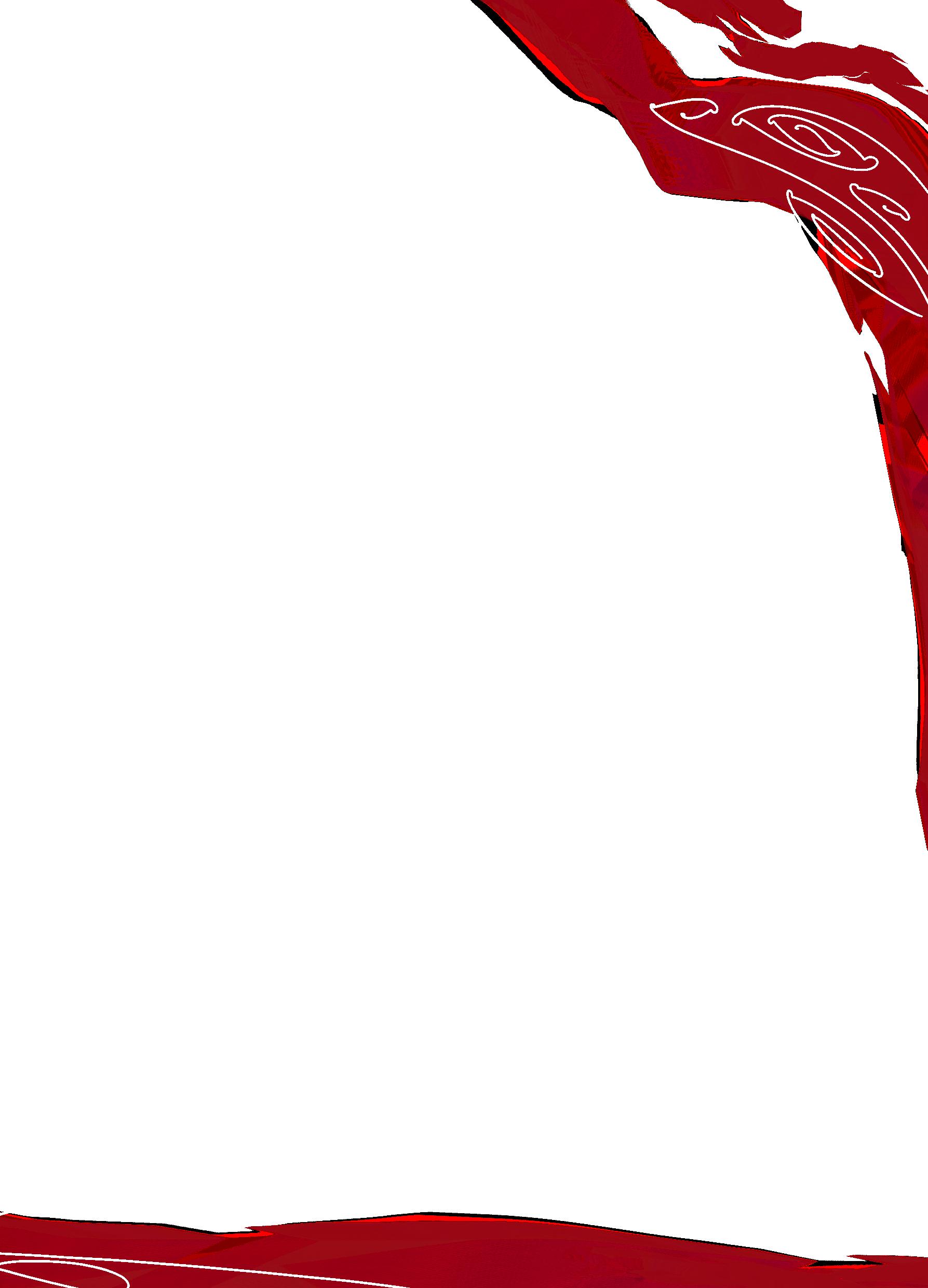
Te kōrero nā Rosa
Hibbert-Schooner(Te Arawa, Ngāti Whakaue, Ngāti Awa Graduate from Te Puna Wānaka o Ara, Te Tohu Ohoka)
They come to talk. To stumble around the philosophies so false they cannot even trace where they come from without our land they stole. Lives built on being better than others, without realizing they still do not understand anything without us.
We come to connect, to feel the very breeze of the sea our ancestors once knew as one. The legacy they left so far intertwined into our whenua it cannot be undone. We know this to be true. We are loud about that too.
They see our past and present as mouldable, buyable and sellable. Usable always but never quite doable. They see our tikanga, reo, ahurea as commodities and smile with their clenched teeth through a “mandatory” waiata. Though they are the ones who claim to the cameras watching the next day that we were the ones to make mockery of our customs.
E noho… the waiata rings
We understand the future we need and the urgency of this. So close we can smell it but you push it further away.
They see urgency as a tool to undo everything about us. Wipe us from existence again, they will try.
They join international alliances to do the same to Iwi taketake across the world. How dare they decide such a thing on this whenua? The same papa that knows what aroha ki te tangata is. The same papa that watched Te Tiriti be dishonored time and time again. She holds the secret that spread as long as her, never ceded, never ceded. Always seed her.
It never worked the first time. It won’t work now. We turn up, white flags raised, together. Indigenous, tangata whenua, tangata Tiriti alike. Rising like te Rā, consistent, ia rā, ia ra. Our tipuna are watching us as we lay the legacy alongside them. Will our tamariki be smiling when they look back on us?


Anahera Totoro (Centrefold - Pages 20-21)
(She/Her) Ngāti Hine, Ngāpuhi, Ngāti Porou
Te Tiriti o Waitangi is a living document that affects everyone in our country. In this artwork I wanted to speak on the detrimental effect of treaty violations. Specifically for Māori in the health sector. I wanted to address the stresses on Māori students to do well, and the effect this has on health due to habits they may pick up. I also wanted to address how striving to succeed at uni often takes you away from your whānau and your turangawaewae. Instagram: toi_anahera
What if? - Hemaima Keane (Front and Back Covers - Pages 1 & 40)
Tāmanuhiri, Rongowhakaata
Te Huihui o Matariki Chi Huy Tran (Pages 30) (he/him) [Taranaki Tūturu, Te iwi o Maruwharanui, Ngāti Maniapoto]
Te Huihui o Matariki Chi Huy Tran (Page 24) (he/him) [Taranaki Tūturu, Te iwi o Maruwharanui, Ngāti Maniapoto]
Illustrations.
Kanohi ki te kanohi - Hamuera Hohepa Hita (Page 18)
Ngāpuhi
Artist from Te Tai Tokerau founder of @make. aotearoa.native.again This toi was inspired by the agreement of Te Tiriti oWaitangi. It shows the handshake of two cultures seeing kanohi ki te kanohi (eye to eye) . For me, this toi shows that though many Pākehā may not understand Te Tiriti, there are a lot who do. The hand in the form of the taniwha represents Pākehā fear of Māori—fear from a lack of understanding. Once contact is made with the hand, they will finally see and understand where
we are coming from. They will understand we all want to be equal, nothing more nothing less. This toi is in appreciation of Pākehā who do see us eye to eye, who have an understanding of Te ao Māori. I think there is a deep guilt in Pākehā who think we will do to them and their people what they have done to us—but that is not the mind of Māori. They forget we welcomed them to this land and wanted to share it. In 1994 Tame iti went to a meeting with the Crown about Tūhoe land and found Crown representatives on stage, looking down at the people. He noticed they were not eye to eye. So he got a ladder, stood on top of it, and they spoke kanohi ki te kanohi. This toi is in that spirit.
This blank page is an acknowledgement of T me Iti’s Haki Ātea protest at Waitangi 2024.The protest was part art piece and part pōwhiri, and features white flags and people wearing all white. Tāme Iti said it was a new and creative way to protest. As Te Rangi Moaho Iti explains: "We call it a Haki Ātea. The ātea comes from the separation of Ranginui and Papatuānuku, and when they separated there was an ātea—a blank canvas, and that is what the white flag represents: a blank canvas to find new ways to move forward, to start again." Tāme Iti also gifted a sculpture named Ngā Tamatoa to Waitangi. The work he made pays tribute to the protest group of the same name that Iti was a part of, and is engraved with the words of the late Moana Jackson. The idea of this pages inclusion came from Te Rātā (Āpiha Tūmatanui at Ngāi Tauira) and we have the privilege to have permission from Tāme Iti and whānau to publish this.
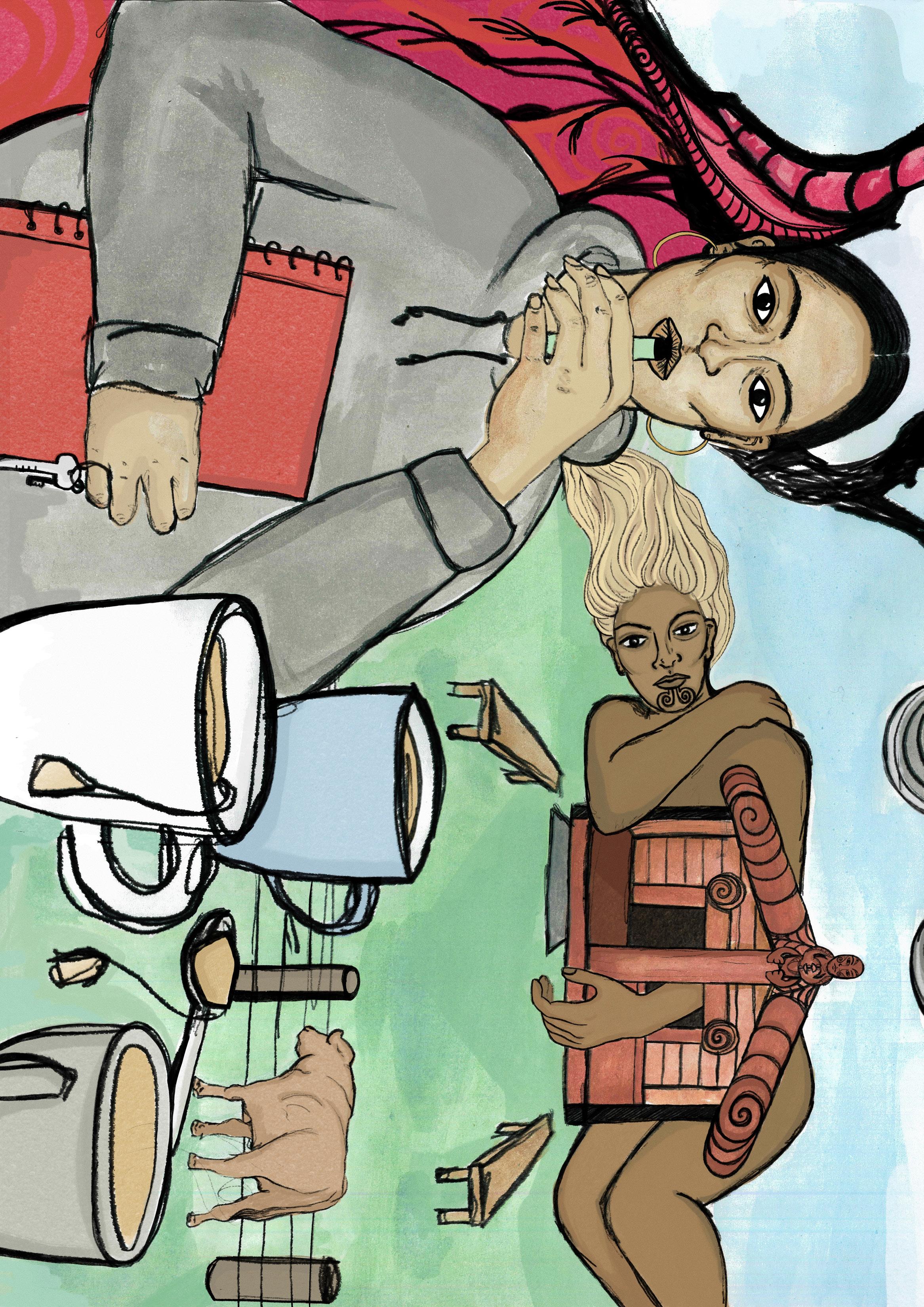
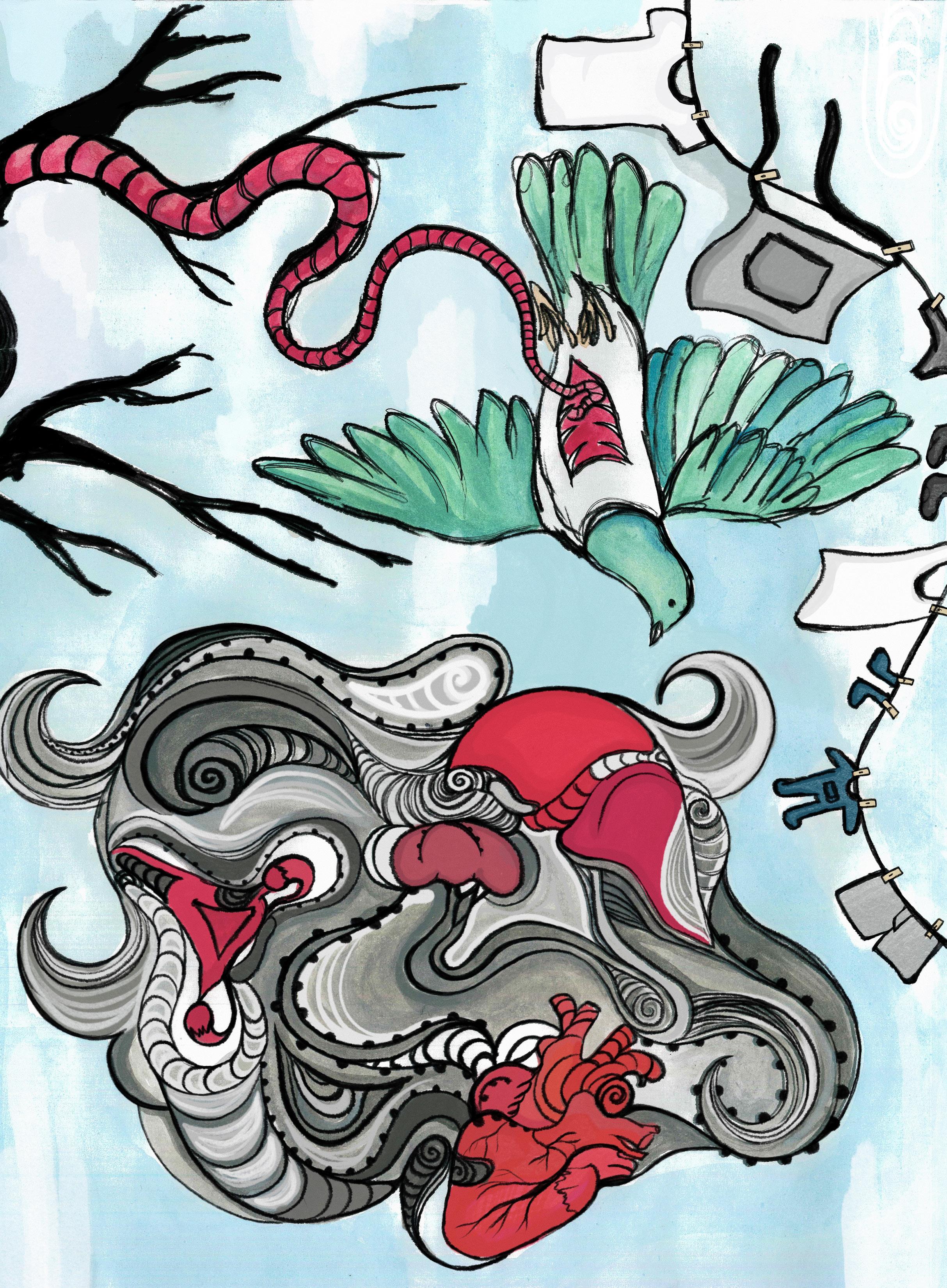

A university statute may not strike you as the most exciting topic but our Te Tiriti o Waitangi Statute is pretty unique. Adopted in 2019, Te Herenga Waka—Victoria University of Wellington is the only university to have such a statute. Other universities may have branded themselves as Tiriti-led but here, we have used our highest form of policy document to hold ourselves to account. But what is a Te Tiriti o Waitangi Statute, and what difference does it make?
Our Tiriti Statute is short, and relatively simple. It draws on concepts from the actual Te Tiriti o Waitangi document, as well as key Waitangi Tribunal reports, other governance documents from the University such as the Strategic Plan and Mai i te Iho ki te Pae—Māori Strategic Outcomes Framework, and from mātauranga Māori (Māori knowledge). This culminates in a set of principles that are listed in the statute—but they are not the ‘Crown Principles’ or the ‘3Ps’ so often referred to (and criticised) in other contexts.
Our eight Tiriti principles were selected with a lot of care and consideration for our distinctive university context and purpose. They are: kāwanatanga (good governance), rangatiratanga (self-determination), kōwhiringa (options), mahi tahi (partnership), kaitiakitanga (protection), whai wāhi (participation), rite tahi (equality), and

whakaoranga (redress). The statute includes an explanation of each concept, and gives examples of how they can apply within our university environment.
According to the Deputy Vice-Chancellor Māori, Professor Rawinia Higgins, “our statute sets high and clear expectations for our entire university community to honour Te Tiriti o Waitangi in all aspects of our activity”. Of course, setting expectations is one thing, but a challenge remains around how we can encourage and build capacity within our university community to be able to uphold these principles everywhere and in every way.
One of the ways we are trying to do this is through a Te Tiriti o Waitangi Self-Review process. First undertaken between October 2021-March 2022, our Self-Review was essentially a ‘gap analysis’ of what the university was and wasn’t doing to support Māori student and staff success. The Self-Review team looked at university documentation and systems, held interviews and focus groups, and conducted a survey to find out how well we were tracking against giving effect to each of the eight Tiriti principles in our statute.
While a huge amount of Tiriti-related activity was identified and collated in an online


Te Tiriti o Waitangi Guide, the Self-Review report identified 32 recommendations for improvement. Since then, work has been underway to plug those gaps, make those changes, and raise the standards of our practice to be more Tiriti compliant.
The recommendations have led to a raft of activities, including the University’s Council and senior leaders engaging in Tiriti training, and more reo Māori training being available for staff. They have also led to changes in our processes—for example, Māori panelists have been added to our Academic Programme Reviews process, and a host of university policies now include specific references that align our practice with our Tiriti principles.
Another of the actions coming out of the Self-Review was the creation of the Anti-Racism Initiative (ARI). Designed to tackle structural and interpersonal racism within the University, the ARI team has been busy drafting anti-racism statements, reviewing policies and complaints processes, and our Student Leaders have developed and hosted BIPOC student wānanga about their lived experiences of racism and ideas for moving the institution towards anti-racism.
The ARI project is ongoing, as is the rest of the implementation of the Tiriti Self-Review recommendations, so keep your eyes and ears open for opportunities to support and contribute to this important mahi as we keep the University ‘on its toes’ and continue to embed Te Tiriti o Waitangi into our university practices and community.
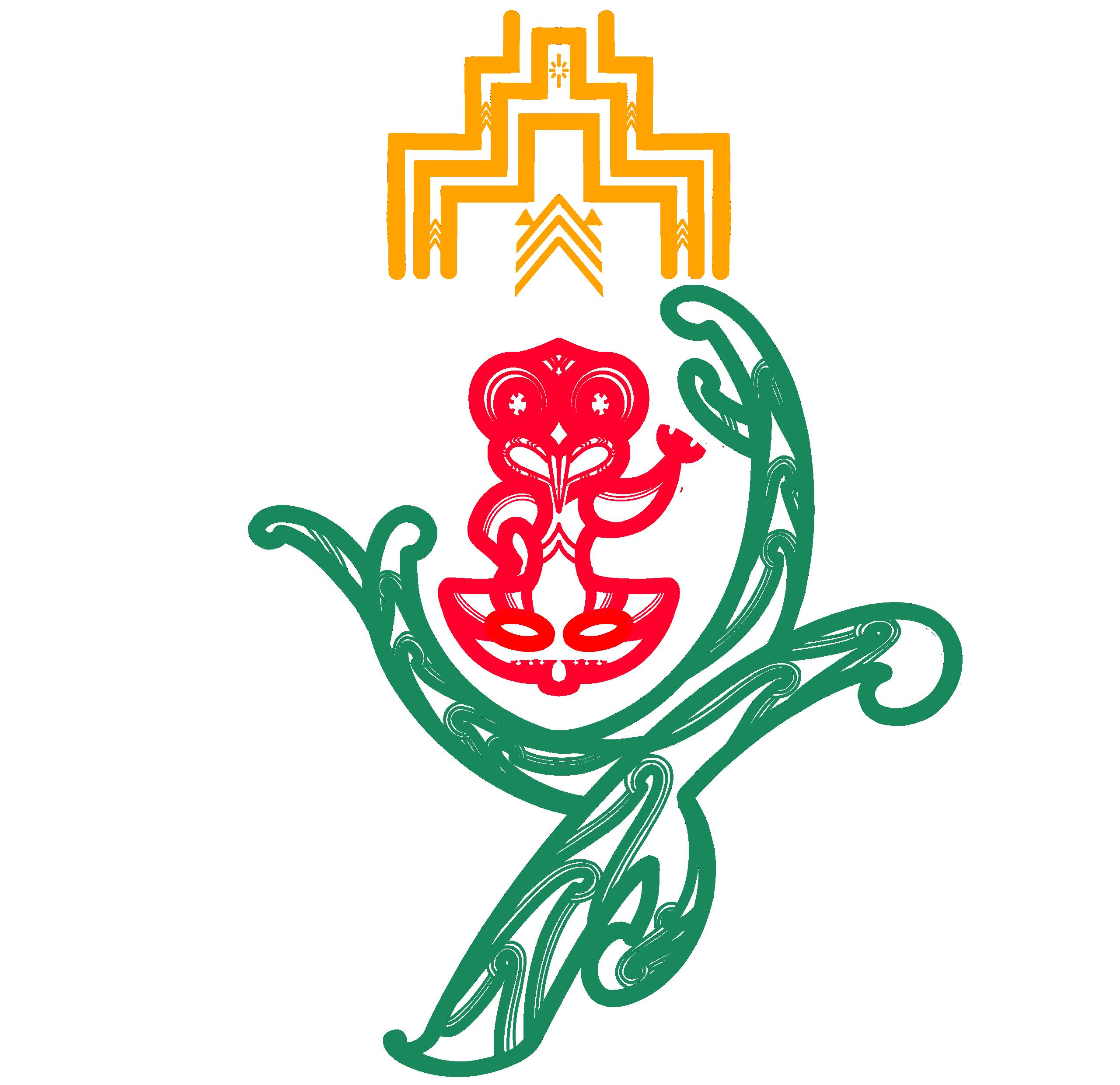



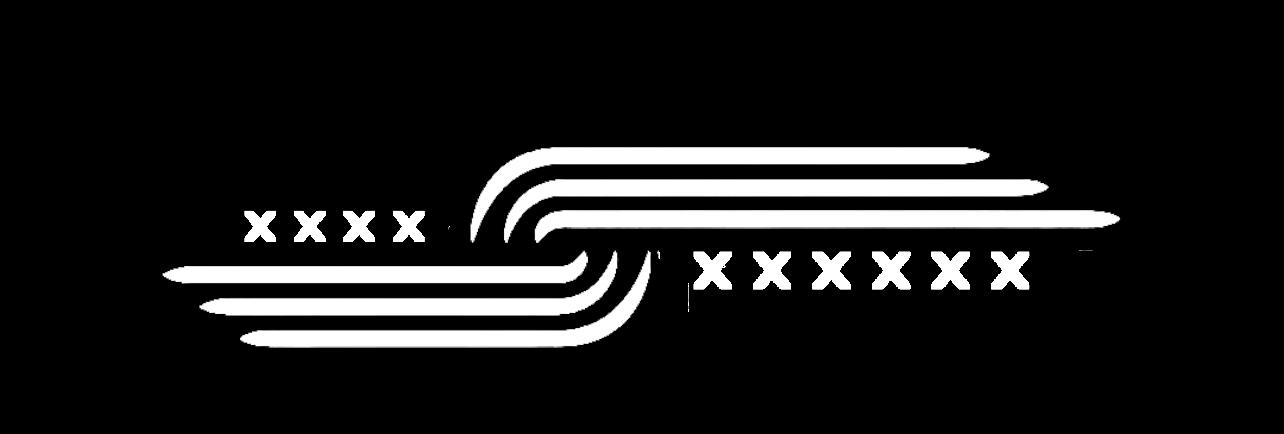
Te kōrero nā Taipari Taua (she/they - Ngāti Kahu, Ngāpuhi)
Ko tēnei te whakatauākī o tōku kura, i ahu mai i te kāhui matua i whakakā ai te ahikā o tōku kura. Ko tēnei whakatauākī e whakamārama ana ngā whainga, ngā wawatā o tēnei kāhui mō ngā tauira, kia moroki tonu te whawhai mō te Tino Rangatiratanga. He whakatauākī kua tāmokohia ki tōku rae, koinei te mātāpono o tōku iho matua.
Ko tēnei whakatauākī te take i whai wāhi au ki te hīkoi nui i Hui-Tānguru mai i te Rerenga Wairua tae noa ki Waitangi, i tīmata tōku hīkoi mai i tōku ake haukāinga i te rohe o Ngāti Kahu. Ko te hīkoi e whakamana ana i te Tiriti o Waitangi me te Hakaputanga, he mea whai i te Tino Rangatiratanga o ōku iwi, o ōku tūpuna i tāmokotia ērā mauhanga.
Koinei anō te take i whai au i te ara ki Waitangi i tērā wā tonu, kia whai i tēnei mea te Tino Rangatiratanga. I reira au whai ai i te ope protēhi o Eru Kapa-Kingi mā, me te tūhonotanga o te hīkoi i arahina e Rueben Taipari ki te pōwhiri mō te Kāwanatanga ki Waitangi. Ka tika ko te marae ātea, te papa a Tūmatauenga, te wāhi mō te tōhē i te taurekarekatanga o te Tiriti o Waitangi. I mua au i te ope, pupuri ana ki te kara o te ope rā i a Winston Peters e kōrerorero, tekateka ana. Nā, i te rongo au i ētahi o ōku kaumātua, pakeke nōki e kōhete hāmama ana i a ia. Inā tōku riri i tēnei, tuatahi ki te kōrero whakaiti a Peters, tuarua ki te riri o ngā reanga i muri i au. E hia ngā tau rātou e whawhai ana mō te Tino Rangatiratanga, kia rangona tonu ngā kupu kerakera a te Kāwanatanga. I reira tonu au pā atu ki te wairua haka, ka tūwhera tōku waha kia haka atu ki a Peters:
“He taitimu, he taipari!
E te karetao o te Kāwana, Ko wai koe, ko wai koe? He aha tāu? Takatakahia te mana o te Tiriti, o te whenua, o Tangaroa ē
Ina, ana, koia rā
Ina, ana, koia rā, hi!” Koinei ko ngā kupu o te haka o te Hīkoi Takutai Moana e whakahē ana i te Kāwanatanga, i tito i te tau 2004. I panonitia e au ētahi kupu kia hāngai ake ki te kaupapa o te wā i a au i Waitangi. 20 ngā tau kua pāheke mai i te titonga o te haka rā, kua tino whai take ēnei kupu i ēnei rā tonu. Timu atu he Kāwanatanga, pari mai he Kāwanatanga, kei konei tonu ngā take, ngā tāmitanga a ōku mātua, ā ō rātou mātua. Kei te korokoro o te parata tonu te oranga tonutanga o Papatūānuku, o Tangaroa hei tā ngā mahi hīanga ā te Kāwanatanga.
Ka mutu taku haka, ka rongo au i te toenga o te ope tautohe e hamahama ana kia noho a Winston. I mea mai ētahi ko tēnei porotēhi he mea harehare, hoi, ki tōku nei whakaaro, ko te porotehi he whakamana i te Tino Rangatiratanga. Ko te haka, he whakamana i te Tino Rangatiratanga. Mēna ko te Tino Rangatiratanga he puakitanga o te mana motuhake, ko te porotēhi i ngā mea e whai ana kia kāti i te Tino Rangatiratanga he mea whakamana i tēnei mea anō.
Me te mōhio kua pēnā te kitenga a ētahi ki ngā kaiporotēhi ki Waitangi mō ngā tau e maha. Ko tērā nōki te hunga i whawhai mō te Reo me ōna tikanga, te Kapa Haka nōki. Nei rā te mihi ki ngā reanga o muri i pakanga, i whawhai ao te pō, pō te ao, mō ngā reanga whakatipu e whai ake nei. Ko rātou te take e tāea ana au te tū haka, kōrero Māori ai. Ki a au nei ko tā mātou whakautu i te toto, i te tōtā i heke, ko te whakamoroki ai i tēnei pakanga, kia whawhai tonu, mō āke, ake, ake.
He take kua rite te kupu “whai” ki te “whawhai,” ka tika he whawhai te whainga mō te Tino Rangatiratanga. Tika tonu te kōrero o te kapa Angitū - inarā he uri porotēhi tātou ē.

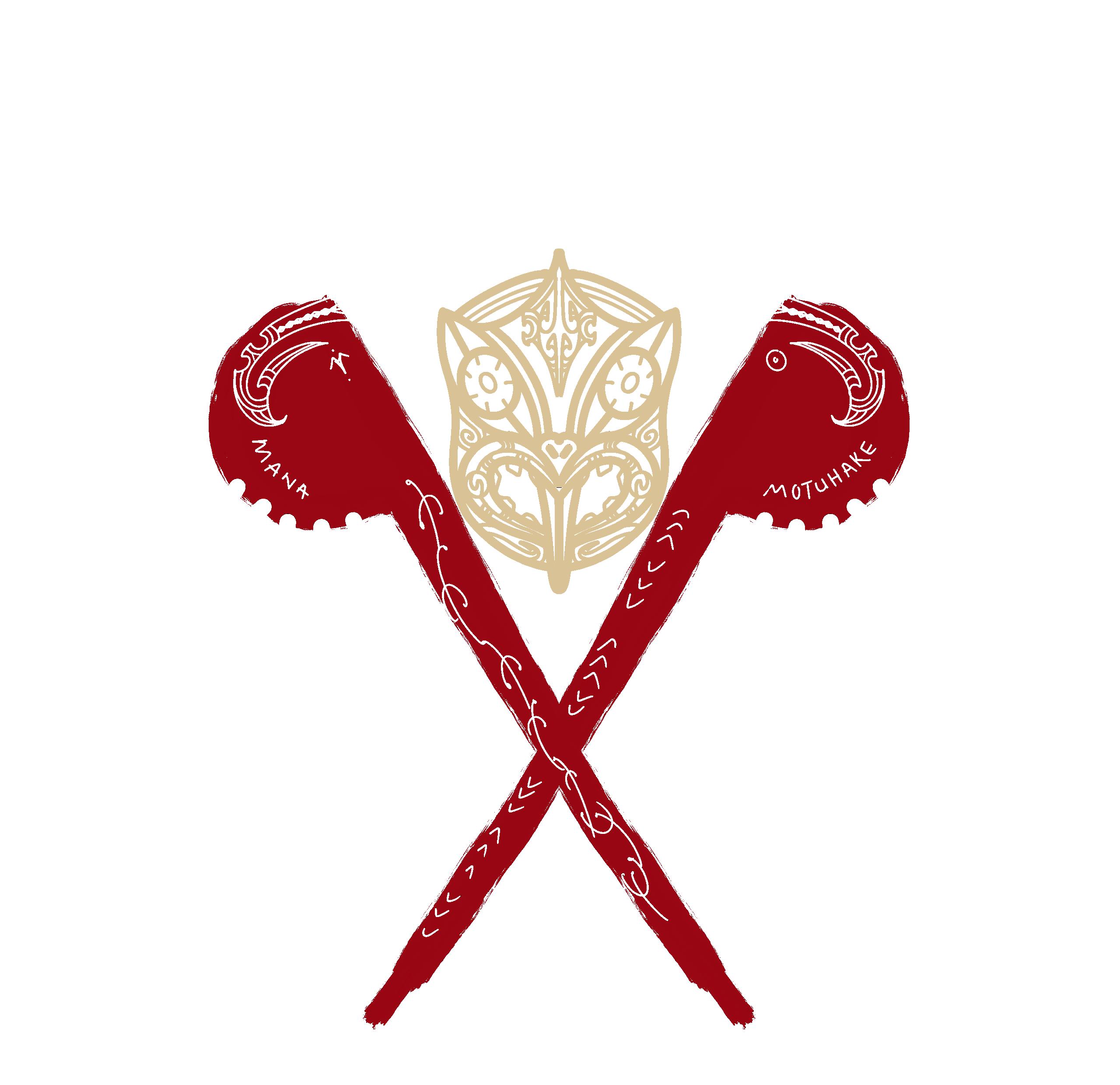


I tupu mai ahau nō roto i ngā whenua taurikura o Aotearoa
I rere noa ahau i tōku kāinga
He noho haumaru, he noho āio
I tētahi rā, i tae mai te mate nui ki tōku kāinga
Kua patua ahau e ringa kē
Kua tāhaetia i ngā arero o ōku ake
Kua roa ahau e tatari ngū ana kia puta anō
Ahakoa tōku māuiuitanga,
Kei ngā ringaringa o ōku ake te rongoā
He wā tōna, ka puāwai anō ahau
Kāre tētahi e pātai ko wai ahau
E kore rawa ahau e wareware
Ka puta anō ahau

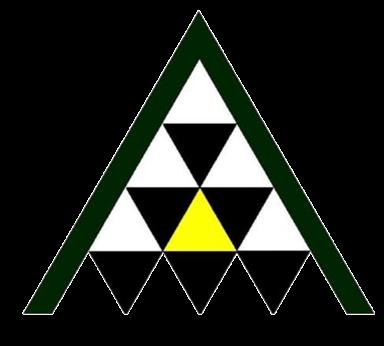

The weaponization of Pākehā tears are the most dangerous weapons to ever befall Aotearoa; more dangerous than our patu, more dangerous than our taiaha, and more dangerous than their muskets.
Māori tertiary education has long been plagued with external critiques, and cries of perceived privilege. From opposition against the establishment of our Whare Wānanga, to the historical exclusion of Mātauranga Māori, to the modern day protests against Māori student spaces in our Universities. Despite the theft of our everything, this still fails to fill the insatiable hunger of a group that has left us nothing.
The irony of superimposing colonial institutions over Māori land, and then claiming that the Māori spaces within those institutions are unequal, is violently hypocritical.
Modern day Māori tertiary education shows homage to the protest movements of the 20th Century, where our kui mā and koro mā fought for the right of Māori to enter and succeed in higher education. Mā te ture anō te ture e āki. By utilising the tools and institutions which oversaw our colonisation, ākonga Māori are able to repurpose said tools to benefit our own people. Turning tools which were meant to destroy and assimilate into pathways of hope, and promise.
For too long indigenous histories have been written by colonial hands. For too long indigenous knowledge has been discarded by colonial minds. For too long indigenous peoples have been silenced by colonial tears.
Akona is a fundamental Māori value which means to learn. This value is embroidered in the walls of our marae through our tukutuku panels. Additionally, akona also means to unlearn. Unlearning bias and entitlements which were engraved by society. Unlearning privilege and expectation. Unlearning the insatiable hunger to take all and leave nothing.
As envisioned in the third article of Te Tiriti o Waitangi, Māori and Pākehā will be treated equally. In colonial institutions where it is inherently unequal to be an ākonga Māori, they way to alleviate inequity is through avenues such as Māori student spaces, supporting Mātauranga Māori and ensuring that our ākonga Māori are not only present, but are thriving.
Nei he mihi mākoha atu ki ngā rōpū tauira Māori o te motu, e whawhai ana mō ā tātou tamariki mokopuna, mō tō tātou ao mātauranga, mō tō tātou āpōpō.
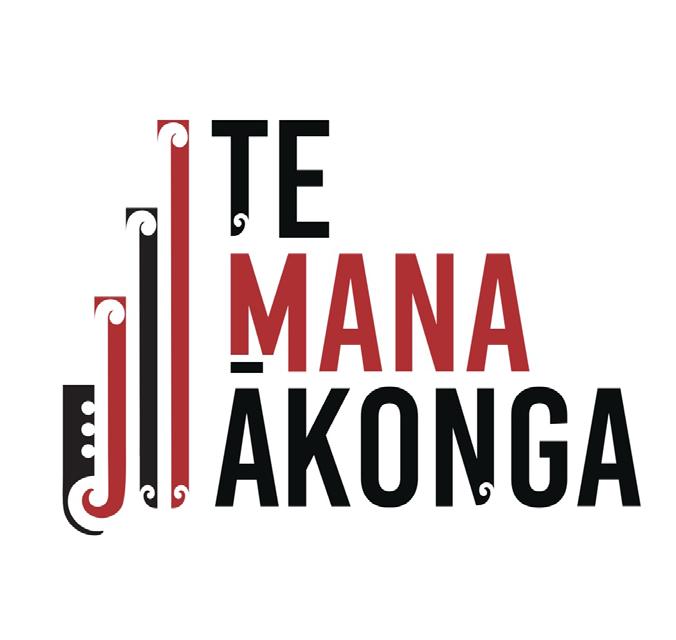

I didn't know if I was Māori. I didn't grow up knowing my whakapapa, iwi, or hapū, much less knowing how to recite my mihi. My father was adopted at birth. For most of my life, no one knew the source of my whānau’s brown skin.
Te Ao Māori can feel intimidating to disconnected Māori. As someone who has lived in constant search of themselves, I thought it would be appropriate to write a column that a young version of myself would have sought comfort in. Perhaps someone else out there will, too.
I first remember questioning my identity as Māori in primary school during a maths test. I opened the front page of the test booklet and stared at the two ovals. One with ‘NZ European’ written beside it, and the other ‘Māori’. Sometimes I shaded both, sometimes I only shaded one. Throughout my childhood, it became apparent these ovals meant more to me than the actual test.
Similarly, when my sister and I were asked “how Māori” we were, we recoiled with “half a teaspoon”. We laughed, but the internal questioning grew louder. Being called a “half-caste” was something we just became accustomed to. We were mutts. We were not purebred, and it felt as if no matter how hard we tried we would not be let into either club. We weren’t enough of either.
It was only when my whanau gave their DNA and money to a corporation that we finally found who we were. A sterile, profit-oriented exchange is far from the organic Māori upbringing, but it is to be expected in this Treaty-ravaged Aotearoa.
I find a twisted solace in now realising that colonialism has had a huge effect on me and my whānau. Needless internal turmoil over my identity, sexuality
and mental health can in some way be attributed back to old white men, whether that be in 1840 or 2024. In 1877 Chief Justice James Prendergast referred to The Treaty as “a simple nullity”, but at a stroke of a pen countless generations of Māori were stripped of their future as proud takatāpui, and of their right to customary spiritual avenues to addressing mental health.
In pre-colonial Aotearoa, my father likely never would have been adopted, and thus we never would have been raised outside of our whakapapa. The customary practice of Whāngai would have protected us from being disconnected from our whenua.
Indeed, the term “half-caste” is not relevant in Te Ao Māori. No matter “how Māori” you are, you are still Tangata Whenua. Not just by the virtue of what your DNA says, but through the shared experience of what that whenua has seen and experienced over the past 184 years and before. This is what connects us. That is to say there is no such thing as ‘disconnected Māori’. It is but a simple nullity.
The David Seymours of this whenua would have it that we didn't have this connection. It is only when we finally realise how truly connected we are that we can stamp out the hatred and bigotry that these old white men have imparted on us, whether they came from England on ships, or from our supposed house of representatives.
As the only Māori on the VUWSA exec, takatāpui no less, it is safe to say my relationship with Te Tiriti has been interesting. To the privileged Pākehā, Te Tiriti can seem like a burning gas giant light years in the past, better to be steered clear of and left untouched. Māori on the other hand, we live close, our retinas burn, but we are not blinded.
Te kōrero nā Josh Robinson (He/HimNgāti Ranginui)
Ashleigh Putt-Fallows (she/her/ia - Ngāti Whātua, Ngāpuhi-Ngāti Hine, Tūhoe)
First Pacific Language Week kicks off this week!
Gasav Ne Fäeag Rotuman Ta—Rotuman Language Week was last week (May 12th-18th) and kicked off our official Pacific language weeks, supported by the Ministry of Pacific Peoples. There will be a total of 11 Pacific language weeks running from the 12th of May to the 30th of November—including Rotuma, Samoa, Kiribati, Cook Islands, Tonga, Tuvalu, Fiji, Niue and Tokelau and, for the first time, Solomon Islands Pidgin and Papua New Guinea Tok Pisin.
Last week, Deputy Prime Minister and Foreign Affairs Minister Winston Peters embarked on a significant Pacific engagement tour to four nations—Solomon Islands, Papua New Guinea, Vanuatu and Tuvalu. He was also supposed to travel to New Caledonia but due to civil unrest was unable to. The tour, which took place from the 12th of May to the 18th of May, aimed to address priority issues such as the impacts of climate change, development priorities, and challenges to broader stability. Peters was accompanied by Health Minister and Minister for Pacific Peoples Dr Shane Reti; Minister of Climate Change Simon Watts; Chair of Parliament’s Foreign Affairs, Defence and Trade Committee Tim van de Molen; and Opposition Spokesperson for Foreign Affairs David Parker.
Assembly Passes Constitutional Amendments Ahead of 50th Anniversary.
Niue Assembly Passes Constitutional Amendments Ahead of 50th Anniversary.The Niue Assembly has made significant strides towards self-governance and Pacific identity with the approval of constitutional amendments. These amendments, which include changing the title from “Premier” to “Prime Minister”, expanding the Cabinet, and extending Assembly terms, passed their second reading. Premier Tagelegi underscored that these changes mark a pivotal moment in Niue’s history, particularly as the island approaches its 50th year of independence, and urged collective responsibility in shaping Niue’s governance, emphasising the need for ownership of the Constitution. The Niue Assembly is set to reconvene for the third reading in August, and preparations are underway for the milestone celebrations in October.
Students travel to Italy to honour Māori Battalion tūpuna on the 80th Anniversary of the Battle of Monte Cassino.
Fifteen cadets from Whangārei’s Leadership Academy of A Company at Te Kāpehu Whetū are embarking on a journey to honour the legacy of the Māori Battalion—alongside school leaders, Ngāti Hine leader Pita Tipene, led by academy leader Louis Paul. Departing for a two-week trip, they will visit historic sites, including Monte Cassino and Florence in Italy, paying homage to the sacrifices made during World War II. The Battle of Monte Cassino saw 28 of 200-strong Māori Battalion killed, wounded or captured.The cadets aim to uphold their memory and build upon their heritage.
The Government’s Treaty Principles Bill faces more scrutiny as the Waitangi Tribunal launches an urgent inquiry into its implications. The Bill, proposing to redefine Treaty principles through ACT’s interpretation of its articles, has sparked widespread opposition. Critics, including iwi leaders and academics, contest ACT’s definition, arguing it grants the Crown and non-Māori more rights than the Treaty intended. They fear it could effectively erase Te Tiriti o Waitangi’s significance from Crown dealings. Ngāpuhi elder Hone Sadler asserts that the proposed interpretation strays drastically from the Treaty’s original intent. The Tribunal’s historical inquiry provides context, affirming that signatory chiefs did not surrender sovereignty but agreed to share power with the Governor. As the hearing progresses, Crown representatives defend the Bill’s necessity to clarify vague Treaty principles, but concerns have been raised about the absence of Māori expertise in its development. The Tribunal’s verdict, due by month-end, will determine the Bill’s adherence to Te Tiriti o Waitangi.
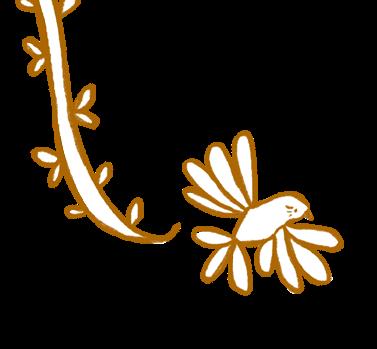
kawepūrongo
In the midst of the Government’s scything of the public service (separating the sandwich and meat-eating wheat from the woke, sushi-enjoying chaff) the University has done something actually relatively cool and agreeable!
Announced a few weeks ago, the University has begun offering a brand new Wellington Public Service Scholarship for Trimester Two. The goal of the scholarship is to support laid-off public servants that want to retrain and get a new, shiny graduate or postgraduate qualification. Composed of a fund of $250,000, the scholarship will be able to pay for the fees of two courses for about 50 students, according to Dr Logan Bannister, Deputy Vice-Chancellor (Students). 48 individuals have so far contacted the University to register interest.
“As Aotearoa New Zealand’s capital city university, we recognise the impact the changes to the public sector are having on our city as a whole and on the people who live here,” she added. “We are sympathetic to the challenges current public servants are facing in Wellington, and this scholarship is a way we can proactively support those who may be wanting to undertake further study as a result of the job losses.”
But this poses the question: what degrees should people use the scholarship on? The obvious move, I think, is to do a Master of Business Administration and pivot from a job in policy to a job in consulting—ending up back at the ministry you got laid off from, but getting paid way more. But why not spice it up and go for an even bigger career change? Well I’ve got some ideas!
The page for this degree says that you can learn how to build AI tools that can “solve real-world problems across sectors like education, logistics, business, and the web.” Think about it! How can Chat GPT possibly come for your job when you’re the one telling Chat GPT how to come for other people's? Flawless.
Master of Physical Activity and Hauora
Maybe you can finally get out of the office and touch some grass. I personally like to imagine that at least a little bit of this degree involves doing a bit of Jump Jam. Isn’t that a fun thought?
Graduate Diploma of Teaching (Primary)
If you’ve had to deal with this government in any capacity, or have had to advise ministers, you’re honestly probably pretty well equipped to deal with a gaggle of screaming 8-year olds. It can’t be that different.
Master of Museum and Heritage Practice
Similarly, if you’ve ever walked through the New Zealand First offices and dealt with them in any professional capacity, you’ll probably be in a familiar environment.
Master of Science (Ecology and Biodiversity)
All I have to say is if you felt like you weren’t listened to during your time in the public service well… you’re gonna looove what academia has to offer you. People famously pay a lot of attention to the things climate scientists have to say!
Master of Urban and Regional Planning
Hey you! Do you like roads? Well I’ve heard we’ve got a lot more on the way and we need people to draw them and plan them, because someone’s put Simeon’s sketching supplies on top of a high shelf. Time to cut through some mountains and forests! Just make sure not to listen to your friend studying a Master of Science in the meantime.
Master of Public Policy
Okay listen… This might not make much intuitive sense, but neither has the decision to lay off over 4000 public service staff. Here’s my pitch: the Coalition are supposedly super into having a meritocracy. So, if you get really super smart and figure out what the hell public policy majors study, surely they’ll want you back, right? Right???

CW: Transphobia, Sexual Violence, Winston Peters
On May 10th NZ First announced the 'Fair Access to Bathrooms' Members' Bill. If passed, the Bill will mandate that all new commercial buildings must have unisex and single-sex bathrooms, and will introduce a fine under the Summary Offences Act for "anyone who uses a single-sex toilet and is not of the sex for which that toilet has been designated".
In the week since, reactions have been rolling in. Really, one reaction. Something along the lines of: ‘what the fuck?’.
Peters, in announcing the Bill, made his international inspiration clear—Tories—citing “a similar move in the United Kingdom this month”.
This is the same UK Conservative Government that risks being listed as a “human rights abuser” by multiple international NGOs thanks to, among other things, its crackdown on basic democratic freedoms.
Rishi Sunack, the (unelected) UK Prime Minister, has also repeatedly hinted at leaving the European Convention on Human Rights—so his government can deport asylum seekers to Rwanda, a state with a well-established track record of repression and disregard for international law.
Great role models, Winnie.
The Bill is allegedly aimed at stopping “the growing trend of mixed-sex toilet spaces which [allegedly] impact the privacy and dignity of everyone utilising these facilities”. Nobody asked, but NZ First is here to save us from the utter debasement of peeing in a closed stall.
The Bill is so absurd that spending time addressing its premise feels somewhat like a waste of time, so we’ll be quick. In a press release, Winnie justified the Bill “primarily in the interest and safety of women and girls”.
Briefly, there is no evidence in Aotearoa of anyone ever using the ‘transgender defence’ for illegal conduct. This is an imaginary narrative. Courts have
repeatedly found that people uncomfortable with sharing such spaces can seek out privacy—rather than forever stigmatising trans people. Trans people are already using the bathrooms they have the right to. Cis men are the demographic that perpetuates sexual violence against women, at epidemic rates. The worst of this violence is experienced by trans women. Essentially, this is a non-issue.
But let’s be real. This Bill has a number of motivations, and none of them are ‘protecting women’. Similar legislation elsewhere hasn’t averted any harm—and data bears this out. Instead, it has actively harmed trans people, and breached their rights. Whether the Bill passes or not, Peters may embolden violent transphobes by giving their bigotry the veneer of state-sanctioned legitimacy. Fear of violence is already a daily reality for our trans whānau, and the mere suggestion of this Bill makes that reality more fraught.
Should it pass, trans people will face a heightened risk of harassment—and one response to an increasingly dangerous environment is to avoid it. This Bill will make merely existing in public more dangerous for trans and gender nonconforming people, therefore eroding their fundamental right to participate in a shared world. Further, in US states with similar legislation, literal ‘pee police’ have spent their time on God's green earth harassing cis women with ‘androgynous’ features—harassment that particularly affects people of colour.
The Bathroom Bill also operates in a similar way to ACTs inane tirade about ‘woke food’—as a misdirect. As long as we’re trying to keep the State out of our bathrooms (seriously, fuck off) we’ll have less time to think about the fact that the suicide prevention office now has zero full-time staff, beneficiaries are increasingly penalised, cost of living is spiraling, oil and gas exploration is ramping up, the rights of disabled people are being erroded, landlords are given tax breaks, and the government is going to war on Māori. Look after your trans whānau, and keep an eye on the coalition. These are not mutually exclusive.

Last week, Police Commissioner Andrew Coster announced the formation of a “National Gang Unit”, which will include 25-30 members at the national level, alongside seven-person district teams. These units will be solely dedicated to monitoring gang activity, with a specific focus on monitoring tangi and other large congregations of gang members. The policy has already drawn comparisons to past efforts to establish specialised anti-gang units, including Judith Collins’ famed “Strike Force Raptor” debacle during the 2020 election campaign.
While little information is available about the National Gang Unit itself, it forms part of a wider escalation against gangs by the new Government, including an outright ban on gang insignia in public areas, introducing gang membership as an aggravating factor in sentencing, and giving police special powers to break up large gatherings of gang members. A report by Attorney-General Judith Collins found that the new legislation was “inconsistent with the rights to freedom of expression, association, and peaceful assembly under the New Zealand Bill of Rights Act 1990”. Justice Minister Paul Goldsmith told RNZ”s Morning Report that even if the legislation was found to violate the Bill of Rights, the Government was committed to passing it into law.
Te Paati Māori’s Justice Spokesperson Takuta Ferris told RNZ that the reforms would unfairly target Māori and Pasifika communities. “Until a government owns up to that responsibility and starts investing back into those communities, and raising those communities up out of the impoverished states that they live in, giving people hope and aspiration, you're never going to fix the problem. You're actually going to exacerbate the problem."
Salient spoke to Mongrel Mob and H2R
spokesperson Harry Tam about the new National Gang Unit. “These units tend to develop a culture of their own,” said Tam. “They begin to feel that they’re above the law… they use heavy-handed policing tactics.” He cited the Department of Corrections’ “Goon Squad” in the 1990s, which reportedly committed human rights abuses, eventually resulting in the death of an inmate after being brutalised by five guards.
Tam cited the Scarman report on the 1981 Brixton riots in the UK, which found that police abuse of “stop and search” powers, similar to what the current Government is proposing, had been weaponised against Black communities and had ended up creating the conditions for violence.
But Tam also said the media had a role to play. In the 2020 election campaign, Tam explained, mass media gave the illusion of a youth crime wave, when in fact youth crime was falling across the board. This allowed the National Party to pursue policies like boot camps, which have a proven track record of increasing reoffending. “Almost every report since the 1990s has pointed to a need to address media sensationalism”, Tam said, yet nothing has been done.


It’s a pandemic’s decade, and we’re living through it. First came COVID-19—still going strong despite reduced attention. Monkeypox also had its moment in the sun a while back. Now it's bird flu’s turn.
Also called avian influenza, bird flu is the flu… but in birds. There are many variants, but H5N1 is the one currently getting attention due to its fast spread and lethality. Millions of birds have died and only Australia, New Zealand, and the Pacific remain H5N1-free.
Given how many endemic birds Aotearoa has at low population levels, the government is obviously concerned. Because of the risk H5N1 poses, Biosecurity New Zealand took the unprecedented step of allowing the Department of Conservation to trial bird flu vaccinations. Usage of bird flu vaccines is usually prohibited, as doing so complicates detection of the disease.
Five species of bird are the guinea pigs; Takahē, Tūturatu (shore plover), red-crowned Kākāriki, Kakī (black stilt), and the Kākāpō.
“This is an efficacy trial, rather than a real-world trial,” said DoC’s Ecology Technical Adviser Bruce McKinlay. “We chose a range of species which were in captivity or under close management so we could learn about the efficacy of this vaccine in New Zealand.”
“The trial started at the end of January, and all of the birds have now received their second dose. There seem to be no adverse effects so far.
“We’re now collecting blood out of the birds looking for antibodies, and once we get that data we’ll analyze it. In about three or four months we’ll be finished.”
This isn’t a population-wide trial; just ten birds from each species are undergoing vaccinations. And realistically, even if things go swimmingly, few species can be vaccinated. It’s just logistically impossible to vaccinate a population of wild untrackable animals, especially considering the vaccine requires two shots.
Instead, as DoC’s vaccine trial fact sheet states, “vaccination might be an effective tool during
outbreaks to protect a core breeding population to prevent species extinction.”
“Internationally there's been massive amounts of bird loss, but there haven't been any actual extinctions,” says McKinlay. “What we're concerned about is where we’ve got birds in close contact with each other—like in captivity—we might have a significant amount of mortality.
“For wild bird populations, we have limited tools. We’re going to have to look out for those birds and see who survives at the end.”
Successful vaccination of a wild bird population has occurred just once before; in America with the California Condor. Bird flu wiped out 21 of the 350-strong population; a disaster in ecological terms, producing fears a subsequent outbreak would obliterate the population. Successful trials convinced the US government to vaccinate the entire population, which is still ongoing. However, testing on already vaccinated Condors has shown some have since caught bird flu and survived.
Condors are already a highly monitored species, and these vaccinations wouldn’t be possible in a species with a higher population or lower levels of management.
The population of the Condors is similar to the species DoC is running its trials on, and McKinlay says the American results are informing DoC’s work.
If you encounter a bird showing symptoms of avian influenza, please take a video and contact Biosecurity New Zealand on their 0800 80 99 66 hotline. Symptoms include falling over, twisting their neck to look upwards, lethargy, and drooping heads.
Transmission of bird flu to humans is uncommon but not impossible. However its mortality rate in humans is 52%. Under no conditions touch any bird showing symptoms.
Headline credit: Ash
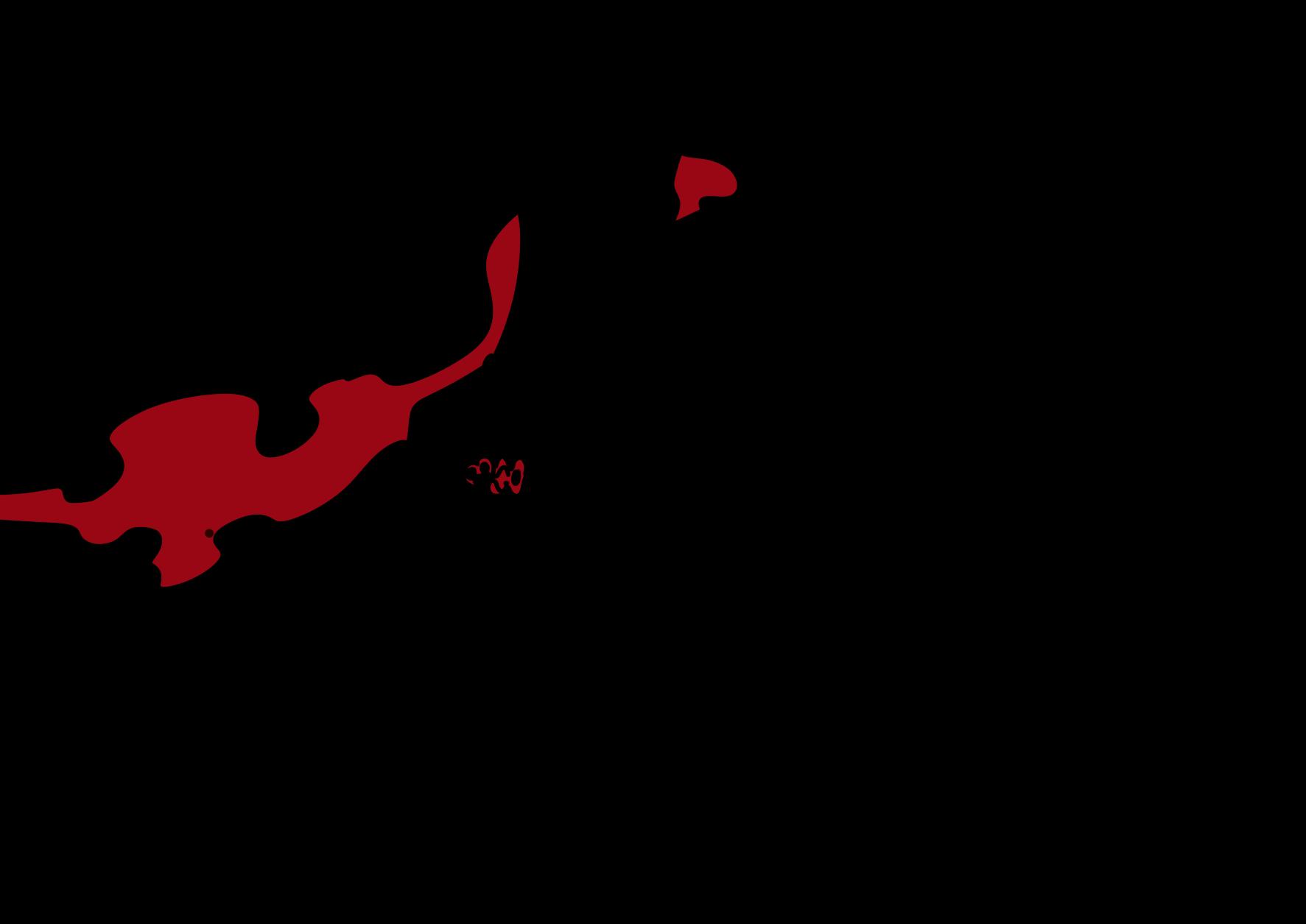
20-26th of May is Youth Week, run by Ara Taiohi. It will celebrate all those between twelve to 24 years of age within Aotearoa. The theme for 2024 is ‘Māwherangi a tama roto ka taka, kāpuia ake ka pūrangiaho / We may not have it all together, but together we have it all’. As Ara Taiohi puts it: “Youth Week aims to amplify young people’s valuable contributions to their communities by supporting them to design, deliver and evaluate all aspects of the week. We want Aotearoa to be a country where young people are vibrant and optimistic and are supported and encouraged to take up challenges”.
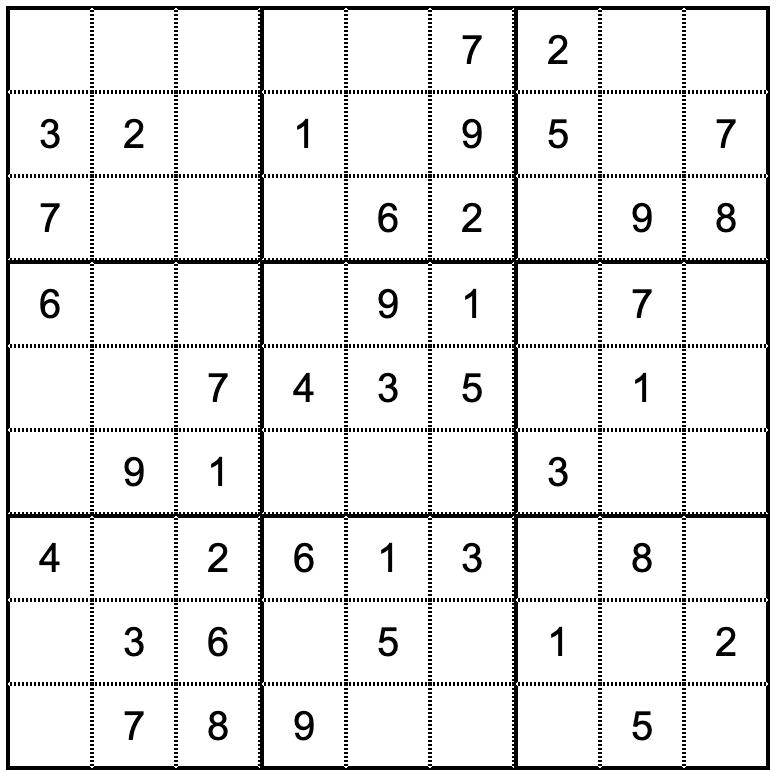





1. Do a 180 (4,6)
6. '_She Lovely' (Stevie Wonder hit about his daughter (4)
10. Tool on which artists mix their paint (7)
11. Perpetrator; criminal (7)
12. Grain grass used to make bread and whiskey (3)
13. State that gives its name to an iced tea company (7)
14. Shape seen in the 'golden ratio' (6)
16. Sink under heavy weight (3)
17. See 8-Down (7)
18. See 8-Down (3)
20. Frankfurter food (3,3)
21. Brass instrument that, in an early version, was buried with Tutankhamun (7)
23. Solidify; group of objects (3)
24. When the moon is usually seen... but not in this puzzle! (2,5)
25. The first book of Dante's 'Divine Comedy' (7)
of the 18-Across, like in the USA in April, or when it's of the 20-Down, like in the song hinted at by 1-Across and 27-Across (5)
9. Go by, as time (6)
15. Seeing or noticing (8)
17. Sufficient (6)
19. Sovereign countries (7)
20. See 8-Down (5)
22. Not suitable for a job or purpose (5)

23. The 18-Across is ine (4)
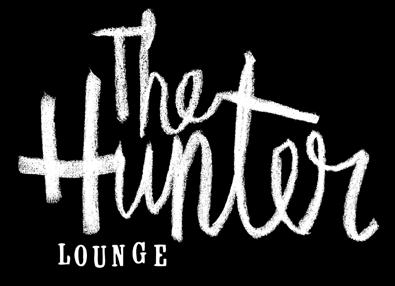
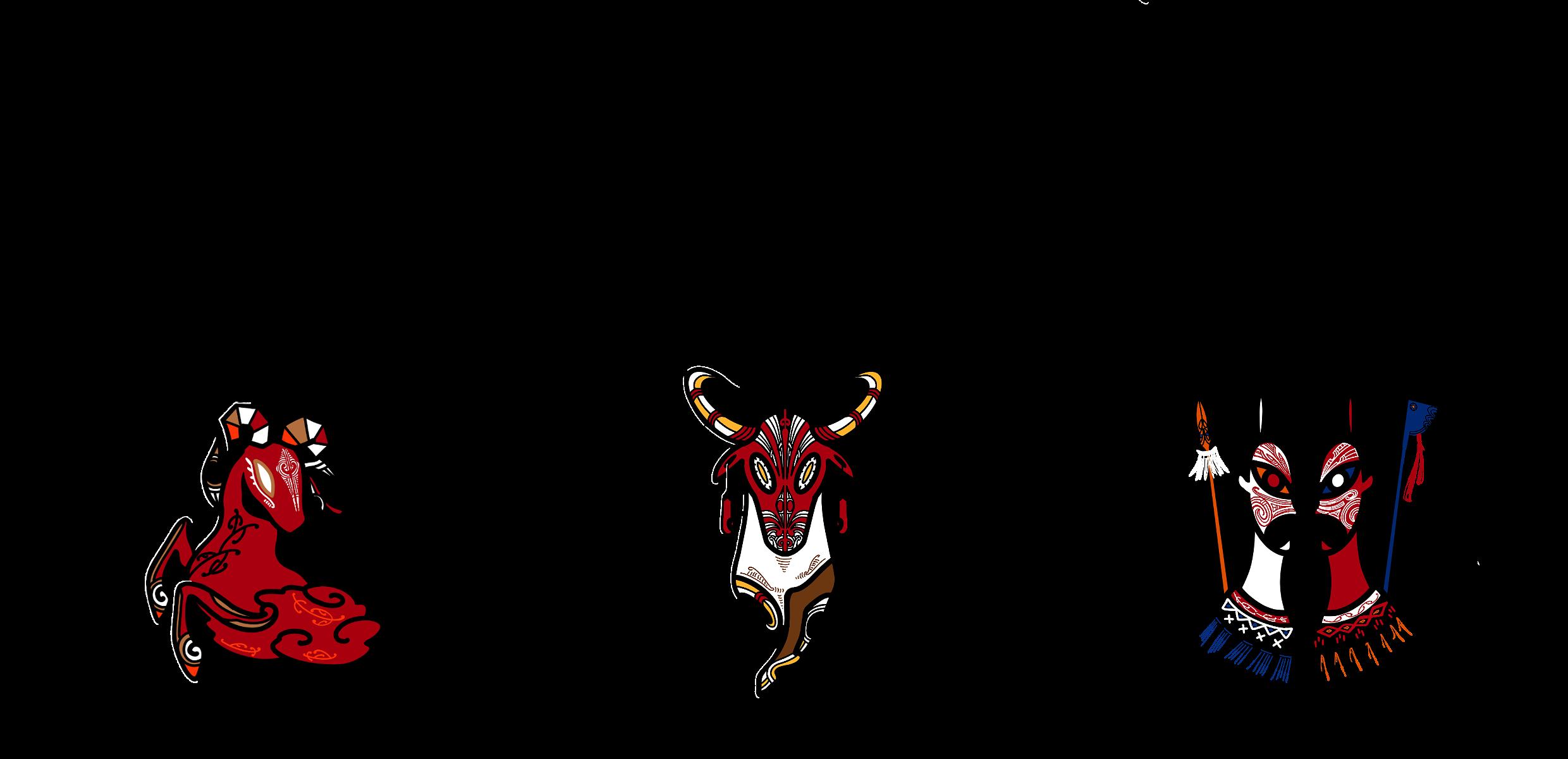

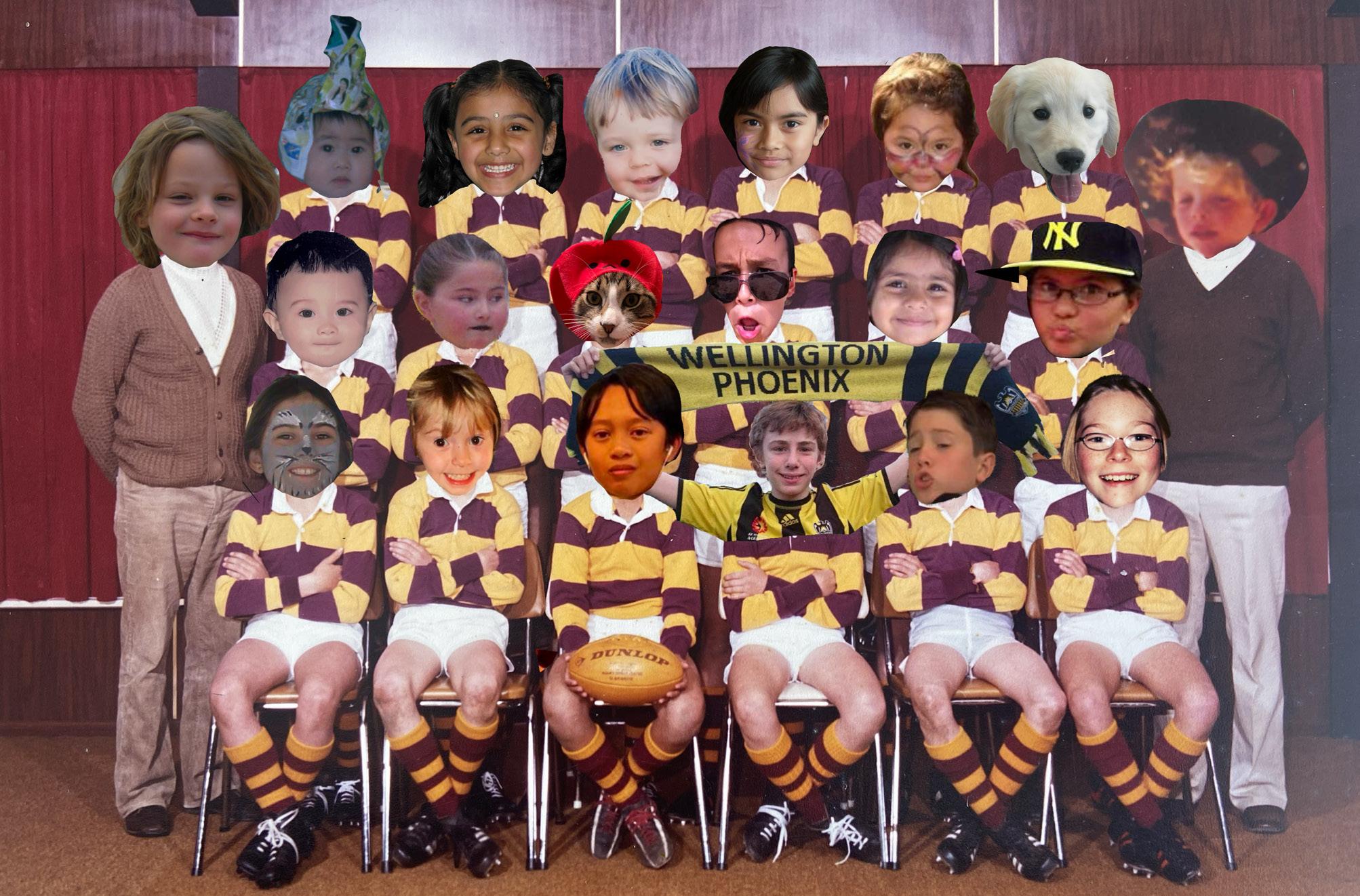
Row: Ngan Dang (she/they, Staff Writer Intern) ;
Online & News Intern) ; Prunella Azzahra (she/her, Design Intern) ; Cedar
Second Row: Phoebe Robertson (she/her, Editor) ; Te Huihui Tran (he/him, Te Ao Māori Co-Editor) ; Ashleigh Putt-Fallows (she/ her, Te Ao Māori Co-Editor) ; M&M (Ash's cat) ; Guy van Egmond (he/him, Contributing Writer) ; Jia Sharma (she/her, Music Editor); Mauatua Fa'ara-Reynolds (she/her, Staff Writer) ; Henry Broadbent (he/him, Sub-Editor)
Front Row: Teddy O'Neill (he/it/ia, Speaker of the House) ; Ava O'Brien (she/her, Distributor) ; Ethan Rogacion (he/him, News Co-Editor) ; Dan Moskovitz (he/him, Chief Reporter) ; Will Irvine (he/him, News Co-Editor) ; Kate Seager (she/her, Designer)
Editors - Designer
Te Huihui o Matariki Chi Huy Tran (he/him) [Taranaki Tūturu, Te iwi o Maruwharanui, Ngāti Maniapoto]
Ashleigh Putt-Fallows (she/her/ia) [Ngāti Whātua, Ngāpuhi-Ngāti Hine, Tūhoe]
Feature and Column Contributors:
Teddy (he/it/ia) [Ngāpuhi]
Te Waikamihi Lambert -[Ngāti Awa, Tūhoe, Ngāti Ruapani, Ngāpuhi]
Hemi Pinford-Whanga [Ngāi Tūhoe, Waikato-Tainui]
Rosa Hibbert-Schooner [Te Arawa, Ngāti Whakaue, Ngāti Awa]
Mauatua Fa’ara-Reynolds (she/they) — Tahitian (Ra’iātea, Taha’a, Huahine) and Norfolk Islander
Te Kura Kaupapa Māori o Te Ara Whānui
Meegan Hall [Ngāti Ranginui]
Te Rau Hihiri
Taipari Taua (she/they) [Ngāti Kahu and Ngāpuhi]
Te Hohaieti o te reo Maori ki Wikitoria
Te Mana Ākonga
Josh Robinson (He/Him) [Ngāti Ranginui]
Art Contributors:
Anahera Totoro (She/Her) [Ngāti Hine, Ngāpuhi, Ngāti Porou]
Hemaima Keane [Tāmanuhiri, Rongowhakaata]
Hamuera Hohepa Hita [Ngāpuhi]
